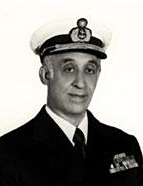

It is also important to look the studies Teixeira da Mota undertook as part of his membership of the academic institutions and circles which were always a part of his scientific life and which his own activities and work helped stimulate. While he began with the Centre for Studies in Portuguese Guinea (CEGP), which he helped create, the Naval Military Club (CMN), the Lisbon Geography Society (SGL), the Centre for Overseas Historical Studies (CEHU), and the Group for Studies in Historical Cartography (AECA, which he directed), were no less important to his research work. He also belonged to the Portuguese Academy of History (APH), the Lisbon Academy of Sciences (ACH), and finally the Centre for Naval Studies (CEM), which later gave rise to the Naval Academy (AM), of which he was the second president. In all these institutions Avelino Teixeira da Mota found support, specialised journals in which to write and publicise his results, opportunities to begin to work with others, and discussion groups and joint projects to take part in. In addition to all this, his teaching work at the Naval School (1958-1965) and as guest professor at the University of Lisbon’s Faculty of Humanities (FLUL, 1965-1969) gave him the opportunity to establish deep and close ties with the academic and scientific community at large.
Taken as a whole, Avelino Teixeira da Mota’s written work can be divided into two major areas. On the one hand, the texts on the study of historical cartography, nautical science and the Portuguese expansion; on the other, the studies – pioneering in Portugal – on Afro-Portuguese relations, African societies and the history of Africa. It is important to note that this duality was due to his professional duties as a naval officer. While it is true that his interest in matters of a nautical and cartographic scope awoke while he was still at Naval School, it is equally the case that his first publications on Africa and Luso-African relations only appeared years later, between the mid-1940s and the early 1950s, when he was the main driving force behind the Centre for Studies in Guinea – of which he was the founder and its president in the 1950s – and he was serving first as the governor’s aide de camp and then in the local Geo-Hydrographic Mission.
When, in 1971, he returned from his service commissions in Guinea and Angola, Teixeira da Mota was detached on special commission to the Colonial Ministry, where he was to direct the Group for Studies in Historical Cartography. It was his intention to use AECA to publish Portuguese sources for the history of Africa, with critical studies and editions in various languages. The task was to prove a difficult and unrealistic one for the scientific and cultural panorama of the day, given that in the next few years the country was to go through a period of social and political transition.
